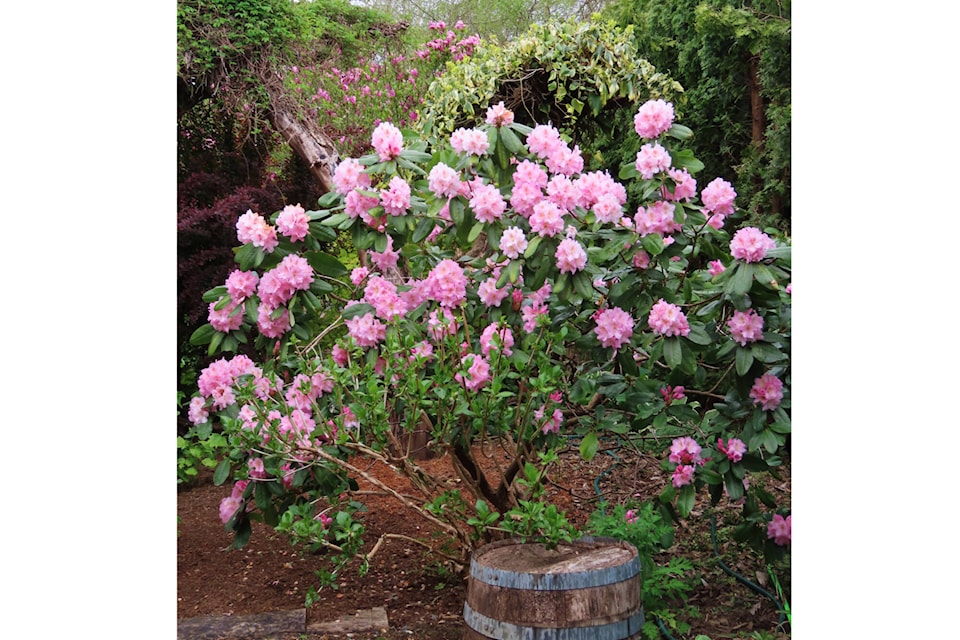Surprisingly, not all is doom and gloom in the garden now the weather is warming. We had an explosion of blossoms on our espalier apple tree and wonder of wonders… the sun shone long enough to bring out the honey bees.
I don’t think the conference pear tree was quite so lucky though. Its blossoms opened first – just a little before that sunny stretch. Every time I walked past the tree, I paused to scan the branches for any bees pollinating the flowers. There were not many. A shame as the tree was covered in blossoms.
The lack of bees has been a little alarming. But that has all changed in the last week or so. We are seeing more bumble bees now so fingers are crossed the female bumbles are busy nest-building and reproducing for the next generations. Better a little late than no reproduction happening at all.
Except for one particular species. I would much prefer the American bullfrogs would not reproduce at all.
You have read my comments in previous columns about this alien species. Well, the warm weather has brought the juveniles to the edge of our pond where they like to sun themselves during the heat of the day.
If only the bullfrogs would limit themselves to eating mosquito larvae, I would stop my rant. But they don’t. Their appetite is voracious and they will eat anything they can stuff into their mouth and force down their throat. This includes my goldfish, Pacific tree frogs, western toads, numerous aquatic beneficial insects like dragonflies and damselflies, garter snakes (some may say “yeh” on that one), birds… and the list goes on.
So, my hunt on bullfrogs has started up again. Just notched Number 3 juvenile this year on my belt.
Very determined to stay on top of them in our pond because when they reach two to three years of age, they start reproducing. Each female is capable of producing as many as 20,000 eggs in a single mating. With a mating season that stretches over two to three months… well, you do the math. All I can say, it is a ginormous number of young’uns coming out of a single female.
As a comparison, western toad females produce 5,000 to 16,000 eggs in a mating season and Pacific tree frogs a mere 1,200.
According to a UVic study on American bullfrogs, they recommend catching and eradicating the juvenile bullfrogs as a way of controlling bullfrog populations. Funny how I “hit” on the least expensive bullfrog population control. But I am only dealing with the ones that come into our garden. There are many, many more in the fields behind us. Guess I should be thankful not all of them find our little pond.
On the brighter side, we had a nice surprise this week. My ‘Scintillation’ rhododendron is a mass of pretty pink blossoms. This is a tremendous bonus considering what a beating this shrub took after two main branches on the Gravenstein apple tree broke under snow load last winter and landed on ‘Scintillation.’
Thankfully, no major damage to the rhodo.
This rhodo is proving to be a real trooper because it survived being uprooted from my garden in Gold River and transplanted to Black Creek over 20 years ago. Honestly, who can resist a name like Scintillation?
•••
Just a reminder that our garden is open to visitors Thursdays to Sundays from 10 a.m. to 4 p.m. Contact me at duchessofdirt@telus.net if you need directions. We also have plants for sale.
Leslie Cox co-owns Growing Concern Cottage Garden in Black Creek. Her website is at www.duchessofdirt.ca
